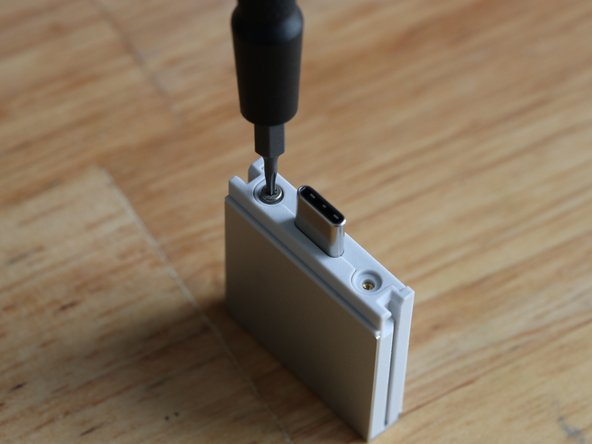Introduction
After over a year of prototyping and experiments, we've been able to come up with a way to reduce system power consumption when an HDMI Expansion Card is present, by making the card pretend that it is not a display output when there is no monitor connected.
You can rework an existing HDMI Expansion Card to have this behavior by following this guide to solder a jumper wire internally and flash new firmware to it. Note that this requires advanced soldering skills, so we recommend that you only try it if you're familiar with extremely fine-pitch SMT rework and have the necessary tools for it. Damage caused by failed reworks is not covered under warranty.
Beta release: Note that the firmware and instructions are still in beta, so there may be further revisions. The firmware update tool from our supplier currently is only available for Windows. We're also running a beta test with 2nd Gen HDMI Expansion Cards with Batch 1 of 13th Gen that has a slightly different modification.
Parts
No parts specified.
-
-
With the T5 bit in your Framework Screwdriver, remove the two fasteners holding the lid onto the Expansion Card.
-
Hold the Expansion Card with both of your thumbs on the lid and slide the lid towards the USB-C plug. It will take a little force to get the lid to unlatch.
-
-
-
Using the T5 bit in your Framework Screwdriver, remove the two fasteners that hold the PCB in. This will let you get to the underside of the PCB, where you'll solder the jumper wire.
-
-
-
This is the hard part! We recommend using a 28 AWG solid wire about 7mm long, along with a microscope, tweezers, a fine tip soldering iron, a tiny amount of solder, and some soldering flux. It takes very little solder to make the connection.
-
If you're at this point looking at the tiny pads and wondering about the steadiness of your hands, it is totally ok to turn back now rather than risking damaging the card. This is definitely a non-trivial soldering exercise.
-
In the first image, you can see the two points that need to be connected. The right pad on the unpopulated resistor footprint, to the third pad on the IC.
-
If your HDMI Expansion Card has a resistor on the footprint that the left orange arrow is pointing to, remove the resistor first.
-
In the second image, you can see an example of a wire soldered into place. Note how little solder is used for the connection. Be extra cautious to not use too much solder, bridging to other contacts, but enough solder that the circuit is solid. Take a close look with a microscope to ensure the solder joint is good.
-
-
-
Screw the PCB back into place using the two black T5 fasteners.
-
Slide the lid back on, and screw it on using the two silver T5 fasteners.
-
-
-
Now that you've completed the hardware part of the rework, you can reflash the HDMI Expansion Card with the new firmware. Note that we currently only have a Windows-based updater available from our supplier.
-
Download the HDMI Expansion Card version 105 firmware here. Unzip it. With the HDMI Expansion Card plugged in, run Framework_HDMI_Card_3.0.16.105.exe. After the update completes, you can run Framework_ReadVersion.exe to confirm that both "Image 1 version" and "Image 2 version" state 3.0.16 build 105.
-
We also recommend marking the card in some way to indicate that you've modified it, in case you have multiple cards in the future.
-
With the rework completed and the firmware flashed, you can expect to see improvements in power consumption in different scenarios. Make sure you're also running the latest firmware on your laptop to see the full results.
With the rework completed and the firmware flashed, you can expect to see improvements in power consumption in different scenarios. Make sure you're also running the latest firmware on your laptop to see the full results.
Cancel: I did not complete this guide.
7 other people completed this guide.
23 Comments
For anyone suffering like @amoonrabbit did, the trick is to have something to soak up the heat in the middle of the wire, so holding the wire in place with helping hands jaws or similar will usually help stop the heat from flowing through the fine wire to the other pad and causing it to desolder itself.
Can we install the updated firmware without doing the soldering? Obviously we woudn't get the full benefit, but would it give any benefits, such as slightly better power efficiency, or better compatibility with external monitors like the 3rd gen HDMI cards? Or would it not work at all?
The flashing tool only works in a framework laptop? I mean, could I connect the expansion card to another laptop and flash the firmware there?
Manuel Carvajal - Resolved on Release Reply
Yes, you can. I even flashed it successfully in another Windows-PC – that had no USB-C interface – by using an USB-C to USB-A adapter. Though, it was USB-A 3.0, of course.
After the mod in windows 11 I get a warning that the USB device is not recognized if no HDMI cable is plugged in and if I plug in a device via HDMI, everything works fine. Under Linux MINT 22, I get not warning. I hope this is normal... Nevertheless, everything seems to work fine :)
BTW: This mod is really really difficult, I almost gave up after 2h of work (However, I had no SMD experience nor a microscope) and I think I only did it by chance.







